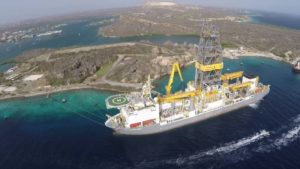Shell has made a significant oil and gas discovery at a closely-watched offshore well in Namibia which could stir up an influx of investment in the southern African country, this was disclosed by Reuters according to three industry sources.
Namibia does not produce fossil fuels, although its northern neighbour, Angola, is a major oil and gas producer and member of the Organization of Petroleum Exporting Countries.
According to the sources, it is uncertain whether the findings are significant enough for Shell to proceed with the development of the country’s first deepwater field.
According to two sources, the Namibian government plans to make a statement next week as regards the nature of the discovery at the Graff-1 well, though Shell began drilling last month. So far, reports have also revealed at least two reservoirs containing “substantial” amounts of oil and gas.
Second drilling results revealed a layer of hydrocarbons at least 60 meters deep, containing 250 to 300 million barrels of oil and gas equivalent. Shell owns a 45 per cent share in the offshore Petroleum Exploration License 39 (PEL 39), with Qatar Petroleum owning a 45 per cent stake and Namibia’s National Petroleum Corporation owning a ten per cent stake (NAMCOR).
A Shell spokesperson said: “We continue to safely execute Graff-1 operations.”
Namibia’s petroleum commissioner failed to comment.
Shell is starting to reduce its oil production as part of a plan to transition to renewable energy and low-carbon fuels. Nonetheless, the corporation may choose to build a new field in order to replenish existing reserves and compensate for output declines elsewhere.
It takes time and money to develop new oil and gas reserves in a country with no established energy infrastructure or regulation, as happened in Guyana on the opposite side of the Atlantic in recent years. For decades, Namibia has attempted but failed to develop oil and gas reserves. However, following discoveries in neighbouring South Africa and Brazil, numerous foreign corporations have expressed interest in its offshore prospects, including Exxon Mobil and TotalEnergies following discoveries in neighbouring South Africa as well as Brazil and Guyana which share geological similarities.
“If Graff-1 is successful, it might attract major international investment to a region that has seen little exploration and production activity in the last 25 years,” IHS Markit analyst Hugh Ewan wrote in a note after Shell began drilling Graff-1 in December.
TotalEnergies began drilling the Venus-1 exploratory well at a depth of 3,000 meters in the neighbouring Block 56 in December.
Source: Reuters
